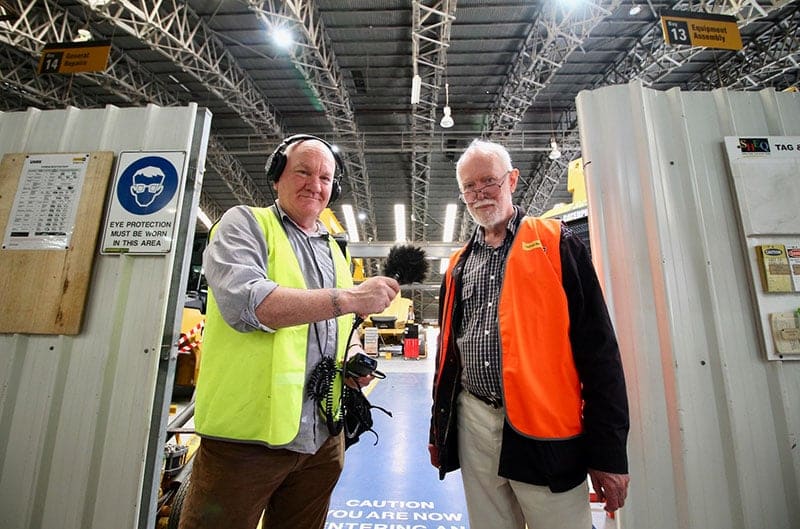“This has to be the ultimate ‘wow factor’ for mass wood assembly,” said Queensland glulam guru John Muller.
The former CEO of Tasbeam in Brisbane and foundation president of the Glued Laminated Timber Association of Australia was talking to Wood Central about a massive 40-metre glulam beam, the first of twelve, to be hoisted in downtown Memphis, Tennessee, USA.
The larger beams will connect six wooden quad pods weighing an average of 7 tonnes.
The construction crew used a huge crane to place the first 8.8-tonne beam into a giant metal canopy, the centrepiece of the $US60 million renovation of the Tom Lee Park civic precinct.
In Portland, Oregon, glulam fabricator Timberlab was the supply partner for the canopy structure, which features six vertical supports composed of delicately arranged steel pipes which span a rigorous and structurally dramatic timber frame.
This is Timberlab’s first fabrication job with Southern Yellow Pine, which worked closely with the design team to provide constructability feedback for connection design and CNC fabrication. The beams have combined lengths of up to 40 metres.

“This is a steel structure mainframe with short-length glulam pieces that basically connect all the steel together,” said construction manager Adam Moore
“This is the first piece of the actual glulam and the first of about 150 pieces that will go together to create the whole civic canopy,” he said.
“It’s really going to be a beautiful structure – all the pieces of wood fit together, almost like a jigsaw puzzle.”
“We’re moving quickly,” said a civic parkland authority. “As cross beams come in on the canopy, the structure will start to support itself, and the crew can take away the shoring towers made out of shipping containers.”
Getting the first beam in place was critical for the contractor, Montgomery Martin.
“This construction job is no easy feat,” John Muller said.

“It shows glulam has made giant strides in recent years, along with CLT, and at the same time is awakening builders and designers to a natural and renewable resource,” he said.
“That glulam is manufactured from relatively short lengths of timber is also an environmental ‘plus’.
“I only wish I was 10 years younger to enter this amazing renaissance of timber.”
But John agreed nothing is new when building short-length timber structures.
The Hastings Deering’s ‘igloos’ erected in Brisbane during World War 2 remain examples of the largest timber-spanned structures built in Australia.

“The hangars near Eagle Farm airport were low-cost, wide-span structures quickly erected using mostly unskilled labour. They were prefabricated on-site with unseasoned timber of small cross-section and in short lengths, taking advantage of the structural strength of native hardwoods,” John said.
“The hangars were developed from their original purpose as camouflage shades for parked aircraft into the largest span spaces of the war in the south-west Pacific.
“The real story was remarkable. They were designed for use in Malaya (Malaysia), the idea brought to Australia by a refugee engineer from Singapore who utilised his contacts, notably the Brisbane contractor’s Manual Hornibrook.”
John said the largest ‘igloos’ might still be the largest clear-span timber structures ever built in Australia.
Editor’s note: John Muller of Wood Addiction and Wood Central Senior Editor Jim Bowden introduced members of the Malaysian Timber Council to glulam manufacture during a Queensland trade mission in 2008. The first project to get started after the tour was Malaysia’s pavilion at the World Expo in Milan, constructed by Woodsfield Glulam Manufacturing using 200 tonnes of glulam manufactured in Johor and shipped to Italy for on-site assembly using steel components.







